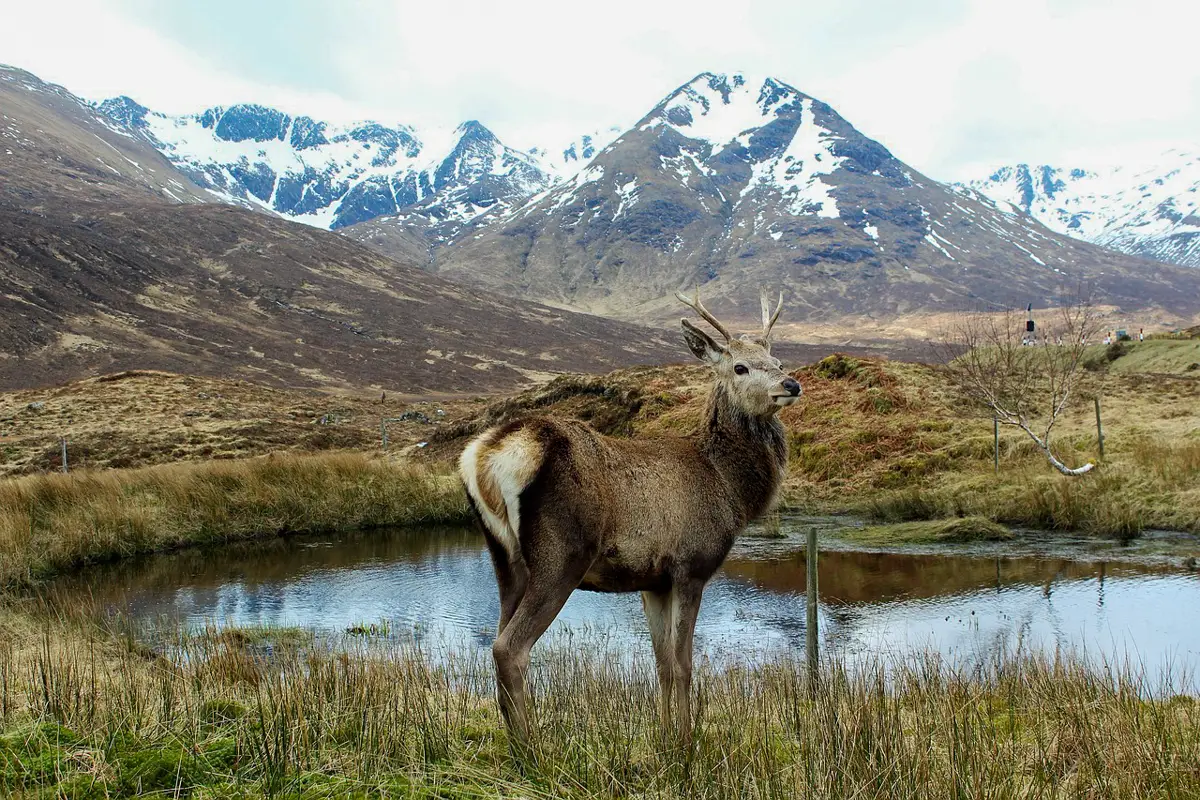If you’re hoping to spot wildlife on the Isle of Skye, you may just be in luck at some point during your trip. Although this island is small, there are plenty of animals that call this rugged environment home.
Among the crowds of tourists visiting Skye every year, a huge number are drawn to the island for the wildlife and photography opportunities. An incredibly rich ecosystem means that the Isle of Skye is home to some rare and exciting wildlife that cannot be seen in other parts of Scotland.
Read more: (opens in new tab)
- Best Isle of Skye Hostels for Your Trip
- Hunting for Dinosaur Footprints on the Isle of Skye
- Isle of Skye Facts
Wildlife on the Isle of Skye: Where to See Them
Below are a few of the island’s most famous residents, along with some suggestions of where you might see them. As with any wildlife spotting, it is important to remember that sightings are never guaranteed.
Puffins
- Where: Waters near the Isle of Canna
- Conservation status: Vulnerable
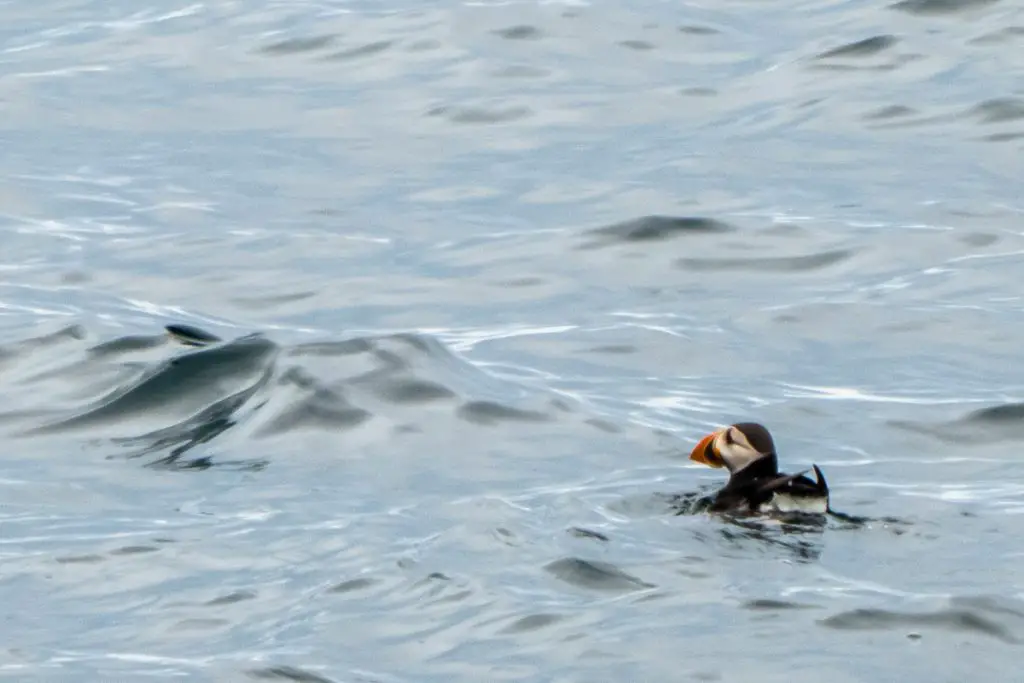
Puffins are small sea birds with a white front and face. Their wings and crown are black. They are best known for their brightly coloured orange and black beaks which change colour throughout the year. They are a dull grey during the winter months but turn orangey-red during spring!
Unfortunately, Atlantic puffin populations are declining and they have been classed as vulnerable by the International Union of Conservation of Nature. There are a few reasons for this, including climate change and overfishing.
Although I’ve included puffins on this list, you technically won’t see them anywhere on the island. Instead, you’ll need to head out on a day trip from the Isle of Skye. AquaXplore run a great boat trip from Elgol to the Isle of Canna where you can see them in their colonies. The best time of year to embark on a boat trip is from April-May.
Fun Fact: A baby puffin is called a puffling.
Sea Eagles
- Where: Portree, Rubh’ an Dùnain
- Conservation status: Least global concern but red in the UK (conservation concern)
Also known as the white-tailed eagle, the sea eagle is the largest bird of prey in the UK. It has a brown body with a pale head and neck. You can identify sea eagles flying above by looking out for their wedge-shaped tails and the ‘fingered’ ends of their broad wings.
In the early 20th century, the original white-tailed eagles went extinct in the UK due to illegal killing and habitat disruption. They were reintroduced to the Isle of Rum from Norway in 1975 and there are now estimated to be around 150 pairs in the UK.
It is possible to see them all over the Isle of Skye but your chances are greatly increased when you are close to the cliffs. The coastline close to Portree is an ideal place to spot them. I’ve also seen them at Rubh’ an Dùnain close to Glen Brittle and around Carbost. Make sure you’re looking up so you don’t miss them!
Fun Fact: The wingspan of a Sea Eagle can reach a whopping 2.4 metres!
Otters
- Where: Otter hide in Kylerhea
- Conservation status: Near threatened
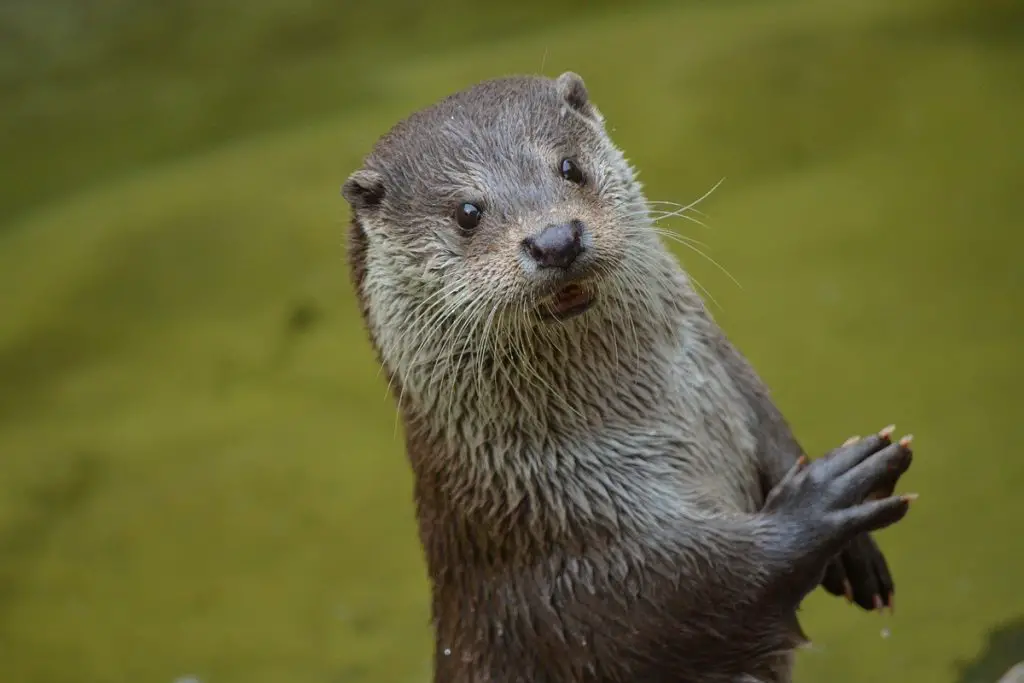
The type of otter found on Skye is the Eurasian otter. It is a semiaquatic mammal and one of the largest members of the weasel family. Although these fluffy creatures look pretty cute, they are fiercely territorial and can be aggressive so if you are lucky enough to spot one, make sure you give it a wide berth!
The diet of the otter consists primarily of fish but they will also eat insects, crustaceans, birds and amphibians if necessary. They favour any unpolluted bodies of fresh water so it is possible to spot them in lochs, streams and rivers if there is a good food supply nearby.
The best place to see otters on the Isle of Skye is at the otter hide in Kylerhea. This shelter has glass windows that look out over the water. Sightings of wild animals are never guaranteed but sometimes the stars align and the patient are rewarded with a glimpse of these elusive mammals.
Fun Fact: Baby otters are taught how to hunt by their mothers who catch live fish, before releasing them to be recaught by their young.
Golden eagles
- Where: Elgol, Eynort, Glen Brittle, Sligachan
- Conservation status: Least concern
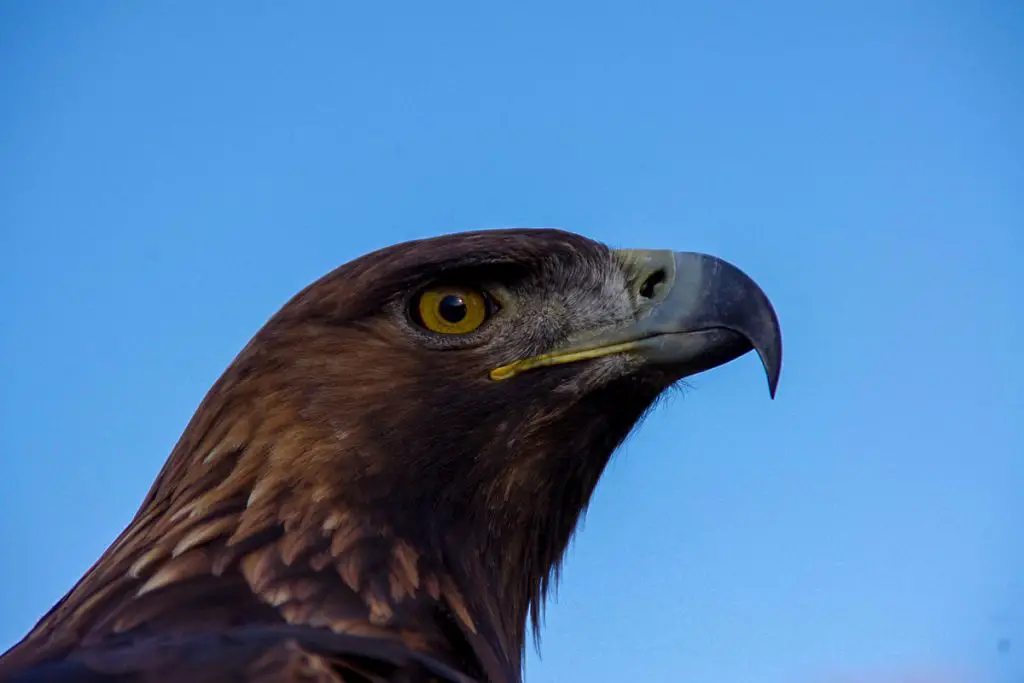
The famous golden eagle is present across the Northern Hemisphere. They are dark brown, with a golden plumage on the back of their necks. They are carnivores and will hunt a variety of prey including rabbits, squirrels and hares to name a few. They have even been known to carry off lambs!
Golden eagles build their nests in cliffs which makes the Highlands and Islands the ideal habitat for them. Their home range can be as large as 77 square miles and it is estimated that Scotland is home to over 400 pairs.
The Cuillin has been designated as a Special Protection Area for golden eagles so any area around the mountains tends to be a good place in which to see them. Pay particular attention if you are around Glen Brittle, Eynort, Sligachan and Elgol.
Fun Fact: Golden eagles are used to hunt and kill wolves in some Central Asian countries.
Dolphins
- Where: Elgol, Neist Point, Waternish Point, Rubha Hunish
- Conservation status: Least concern
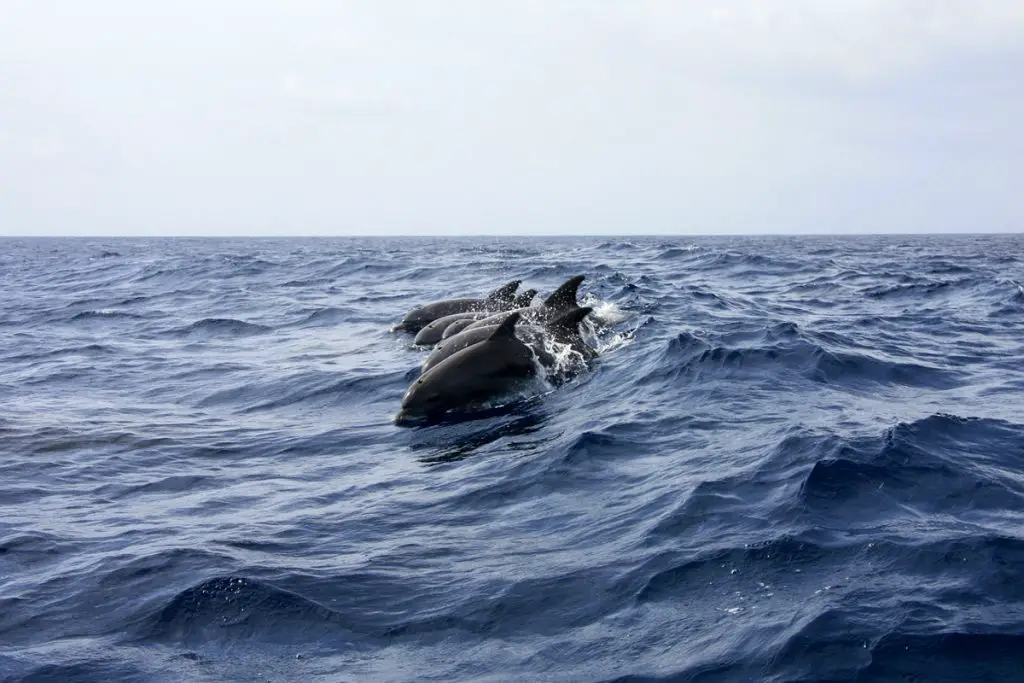
There are two types of dolphins that you could see in the waters around the Isle of Skye. The first of these is the bottlenose dolphin which is around 3-4 metres long and grey in colour. They are best known for their lower jaw, which sticks out further than their upper jaw.
The second type of dolphin is the common dolphin. These generally travel in larger pods and have a unique creamy-yellow hourglass marking on their side. Neither the common dolphin nor the bottlenose dolphin is classed as a conservation risk.
It is possible to see dolphins at a few different spots around the Isle of Skye. Neist Point is probably the best place but sightings are possible at any of Skye’s headlands. To maximise your chances of seeing them, pick a day where the sea is calm and you don’t have anywhere to be — you’ll need to be patient!
Fun Fact: All dolphins have conical shaped teeth.
Red Deer
- Where: Glen Sligachan, Kinloch, Fairy Pools
- Conservation status: Least concern
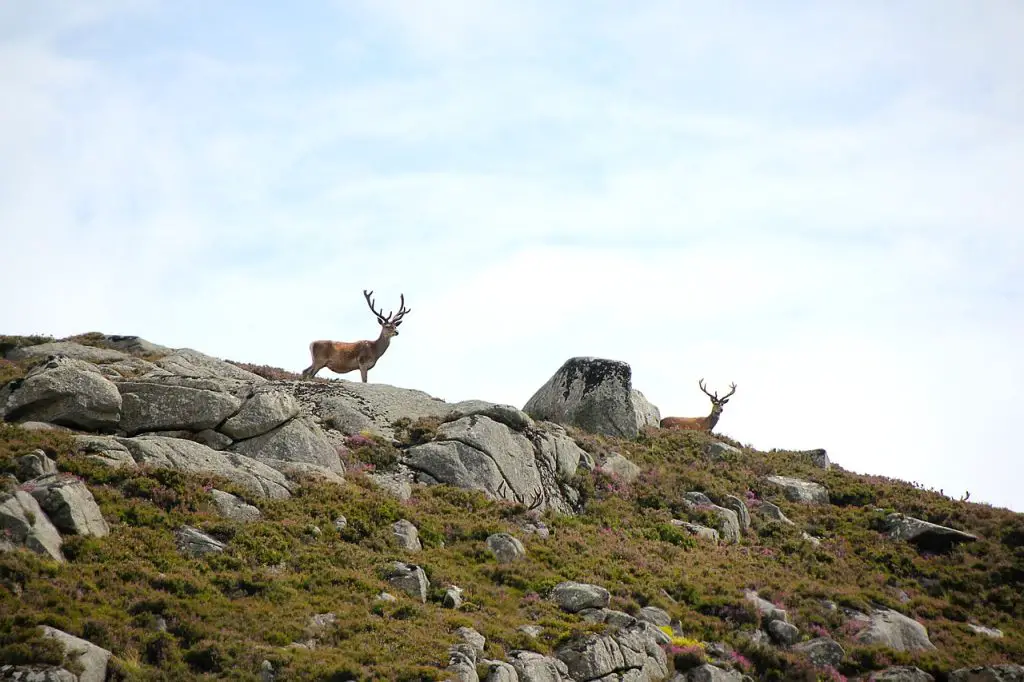
The west coast of Scotland is home to the largest population of red deer in the UK. They are the fourth largest of the deer species and can grow anywhere between 160-250cm long. Only the males (also known as stags) have antlers.
Autumn signifies the beginning of the rutting season where the males battle for the attention of the females. During these confrontations, they will make howling noises that you can hear for miles. Owing to the aggression shown by the deer, you are not recommended to wild camp in forested areas around rutting season.
During the summer, red deer will graze on the higher ground whereas in the colder months they descend to the lower levels. Although it is possible to spot them any time of year, those visiting the Isle of Skye in winter will have a higher chance as they move more freely in the open as a result of fewer tourists. Those taking a trip to neighbouring island Raasay will also have a good chance of spotting them in more remote areas.
Fun Fact: Red deer tend to live around 10-13 years in the wild.
Also read: Amazing hikes on the Isle of Raasay.
Minke Whales
- Where: Neist Point, waters near the Isle of Canna, Elgol, Waternish Point, Rubha Hunish
- Conservation status: Least concern
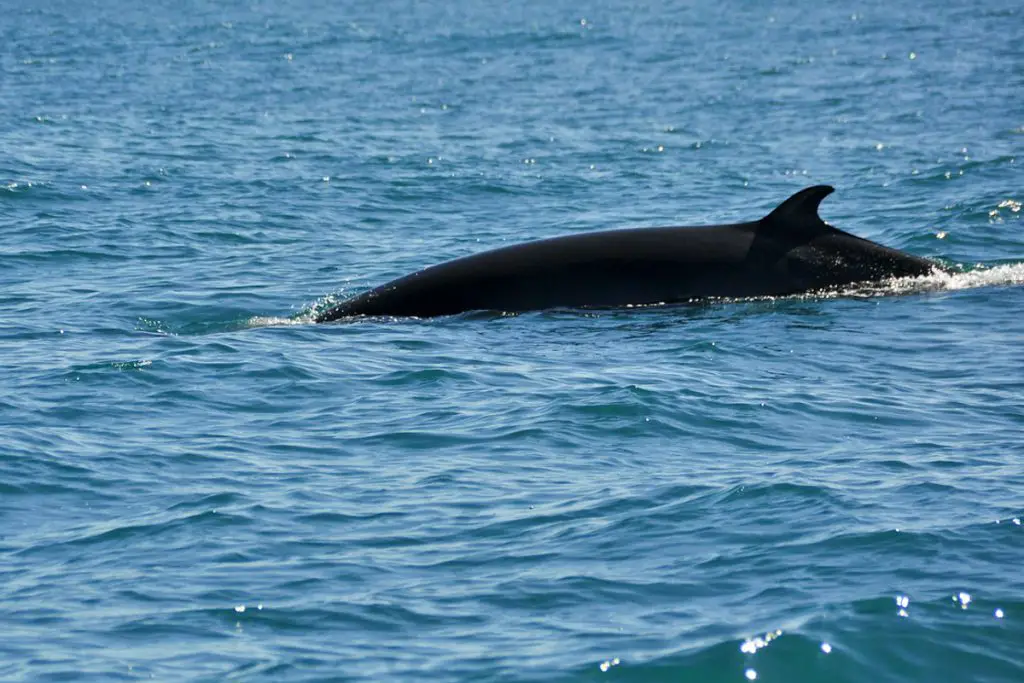
The minke whale is the smallest of the rorqual whales. Despite this, they can still reach lengths of up to 35 metres and weigh an impressive 20,000 pounds! Females tend to be larger than their male counterparts.
Minke whales have varied diets and feed off a variety of schooling fish from herring to cod. Unlike other types of marine wildlife, they are usually seen travelling on their own.
The best time to see minke whales off the coast of the Isle of Skye is between May and October. Although it is possible to see them from most headlands, many sightings are reported from Neist Point.
I actually saw whales on my boat trip to Loch Coruisk. Read more about my return journey tackling the infamous Bad Step here!
Fun Fact: Minke whales got their name from a Norwegian whaling spotter called Meincke. The story goes that he confused a minke whale for the much larger blue whale.
Seals
- Where: Waters near Isle of Canna, Loch Dunvegan, Strathaird Island
- Conservation status: Least concern
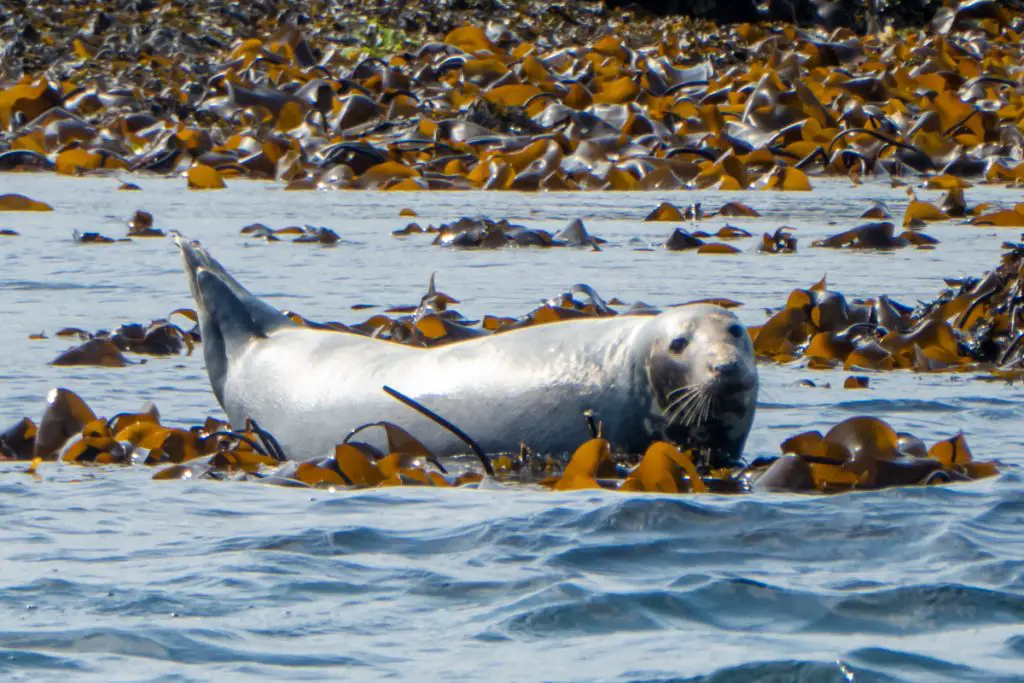
Both the common seal and the grey seal are regularly spotted in the waters in and around the Isle of Skye. You can tell the difference between the two types of seals by looking at their size. The grey seal tends to be larger, reaching up to 2.6 metres long. A common seal, on the other hand, grows up to around 1.6 metres. Common seals also have v-shaped nostrils.
In June, the common seals give birth to their young around the coast of Skye. Grey seals, such as those found in Horsey, Norfolk, give birth in the late autumn.
Many of the boat operators around Skye offer trips to see the seals. In fact, some companies are so confident that you’ll see them, that they’ll even offer to give you your money back if you don’t! On my trip to Canna with AquaExplore, I saw loads of seals. However, if you don’t want to venture that far out, there is also a seal colony out at Loch Dunvegan.
Fun Fact: Seals can hold their breath for up to one and a half hours!
Orcas
- Where: Elgol, Neist Point, Waternish Point, Rubha Hunish
- Conservation status: Data deficient
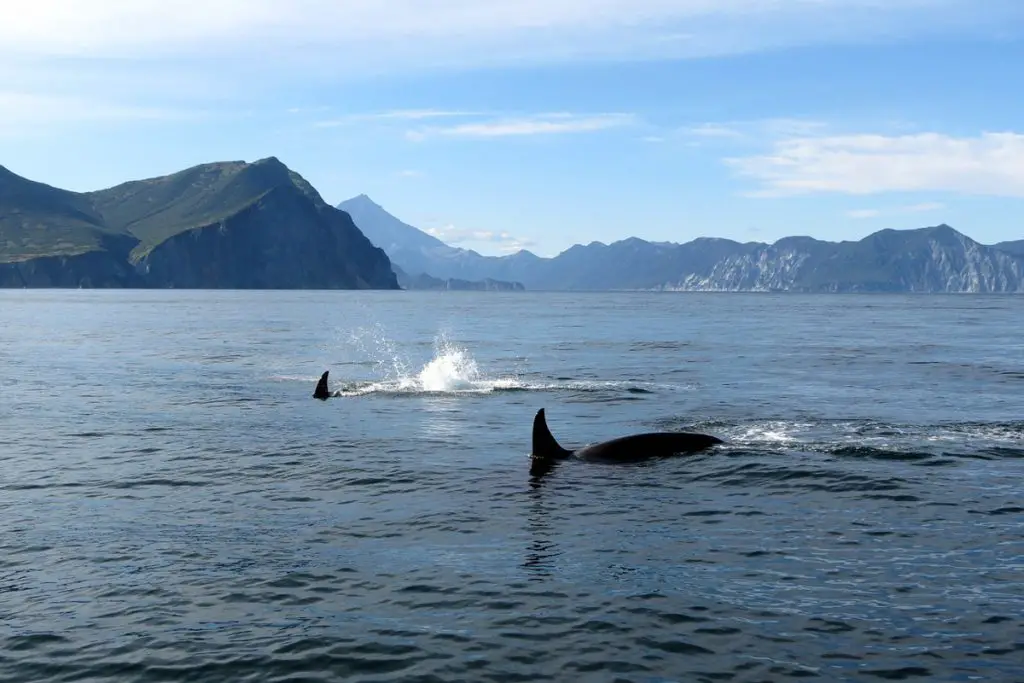
Also referred to as ‘killer whales’, the orca is actually the largest member of the dolphin family. It is known for its black body, white underside and white patches near each eye. If you’re a 90s kid like me, you may recognise them from the classic movie Free Willy.
Although the nickname is enough to strike fear into your heart, orcas don’t usually attack humans. Instead, they get their name from predatory skills which have planted them firmly at the top of the food chain.
It is possible to see orcas in Scotland all year round, particularly in the waters around Skye. However, sightings are not common. Although the official stance is that there is not enough data to determine their conservation status, researchers watching the orca pods that frequent Skye fear that they are endangered to some degree as a calf has not been spotted with the group for many years.
Fun Fact: The teeth of the killer whale are up to four inches long.
Gannets
- Where: Rubha Hunish, Loch Pooltiel
- Conservation status: Least concern but a conservation concern in the UK
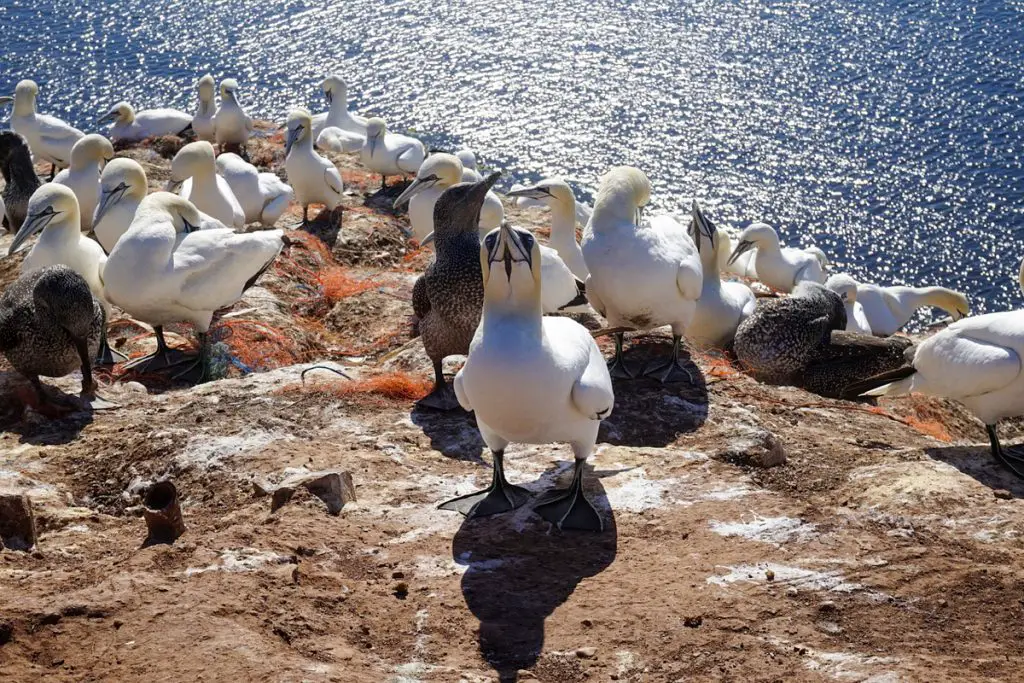
Gannets are a type of seabird known for their bright white bodies and black wingtips. They have a long neck and pointed beak, tail and wings. This unique body shape means that they are extremely streamlined, helping them dive into the sea to fish.
Although 60% of the gannets in Europe are found in Scotland, they breed in significant numbers at only a selection of localities. This has caused them to be listed as an amber list bird species which requires watching.
Keep an eye out for gannets around Loch Pooltiel on Skye. From April-October, it is common to see them diving into the loch. They also gather in colonies on the cliffs. The sea stacks at Rubha Hunish (Skye’s most northerly point) offer another great place to see them.
Fun Fact: The gannet’s nostrils are located inside its mouth which helps it to pursue its prey underwater.
Basking Sharks
- Where: Waters near the Isle of Canna, Rubha Hunish, Elgol, Neist Point, Oisgill, Loch Pooltiel
- Conservation status: Endangered
At a maximum length of 15 metres, the basking shark is the second-largest fish in the world and can weigh up to 4.5 metric tons. It is a greyish colour and has mottled skin. One of the filter feeders, the basking shark has a huge mouth and gill rakers.
The basking shark is sadly an endangered species. There are many reasons for this and by-catches is one of the main contributors. Basking sharks have also been fished to make shark fin soup and to be used in Chinese medicine.
June and July are the best months to spot these around Skye. Although they are rare, they are easy to spot in the water as they cruise close to the surface when they are feeding. To increase your chances of spotting a basking shark, head out on one of the boat trips from Elgol. Bella Jane Boat Trips come highly recommended.
Fun Fact: It is thought that when basking sharks leap from the water, this is done to get rid of parasites.
Fairies
- Where: Fairy Glen, Sligachan Bridge, Fairy Bridge
- Conservation status: Unknown
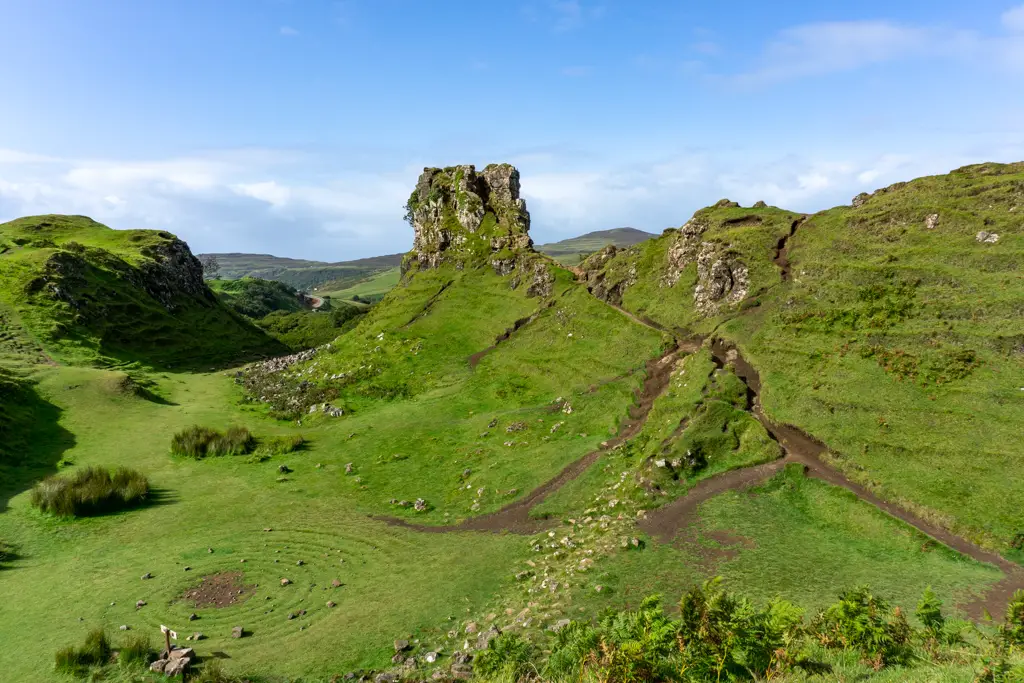
It is impossible to talk about the wildlife on Skye without mentioning the iconic fairies which have made this island such an enchanting destination. These mythical creatures have long been a part of Scottish folklore and the stories behind many of the landscapes on Skye also run along similar themes.
The term fairy usually applies to magical creatures that have a human appearance. They possess magical powers and often use these to trick unsuspecting people. The Fairy Glen, the Fairy Bridge and Sligachan Bridge are all locations on the Isle of Skye which have mythical connections to fairies.
Fun Fact: In the 17th century, Robert Kirk wrote a book about the fairies in Aberfoyle, Scotland. It is entitled ‘The Secret Commonwealth of Elves, Fauns and Fairies’ and describes the lives and activities of those living in the fairy world.
Wild Haggis
- Where: Red Cuillin, Black Cuillin, lower-level hills
- Conservation status: Endangered
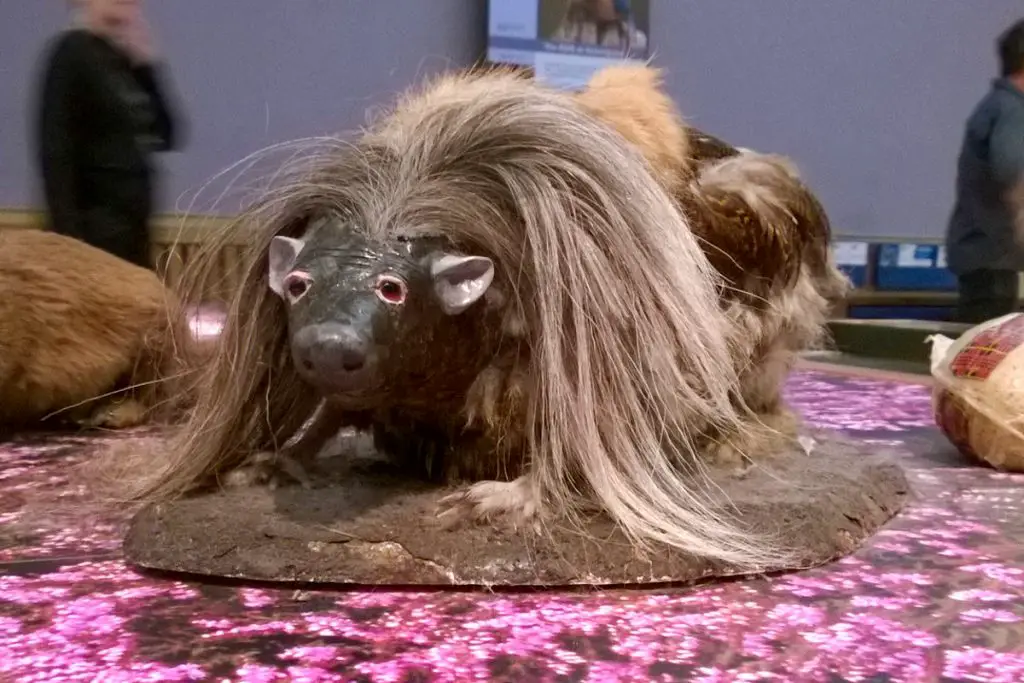
The wild haggis is one of Scotland’s most famous residents. This wiry-haired rodent type creature lives all over Scotland, most commonly in the hills. They are notoriously easy to catch because they can only run in one direction because of their uneven length legs.
Wild haggis is the primary ingredient used in Scotland’s national dish: haggis, neeps and tatties. It is traditionally eaten on Burns Night but the Scots indulge in the dish year-round. Owing to the popularity of this dish, people are very reluctant to stop haggis hunting. This has led to its endangered status.
If you are on the Isle of Skye, the best place to see wild haggis is up in the hills. They generally only come out at night so you’ll have to be committed to the sighting if you’re going to spot them. Both the Red Cuillin and the Black Cuillin are good places to look.
Fun Fact: Importing haggis into the USA has been illegal since 1971.
What wildlife have you seen on the Isle of Skye, Scotland? Let me know in the comments!

